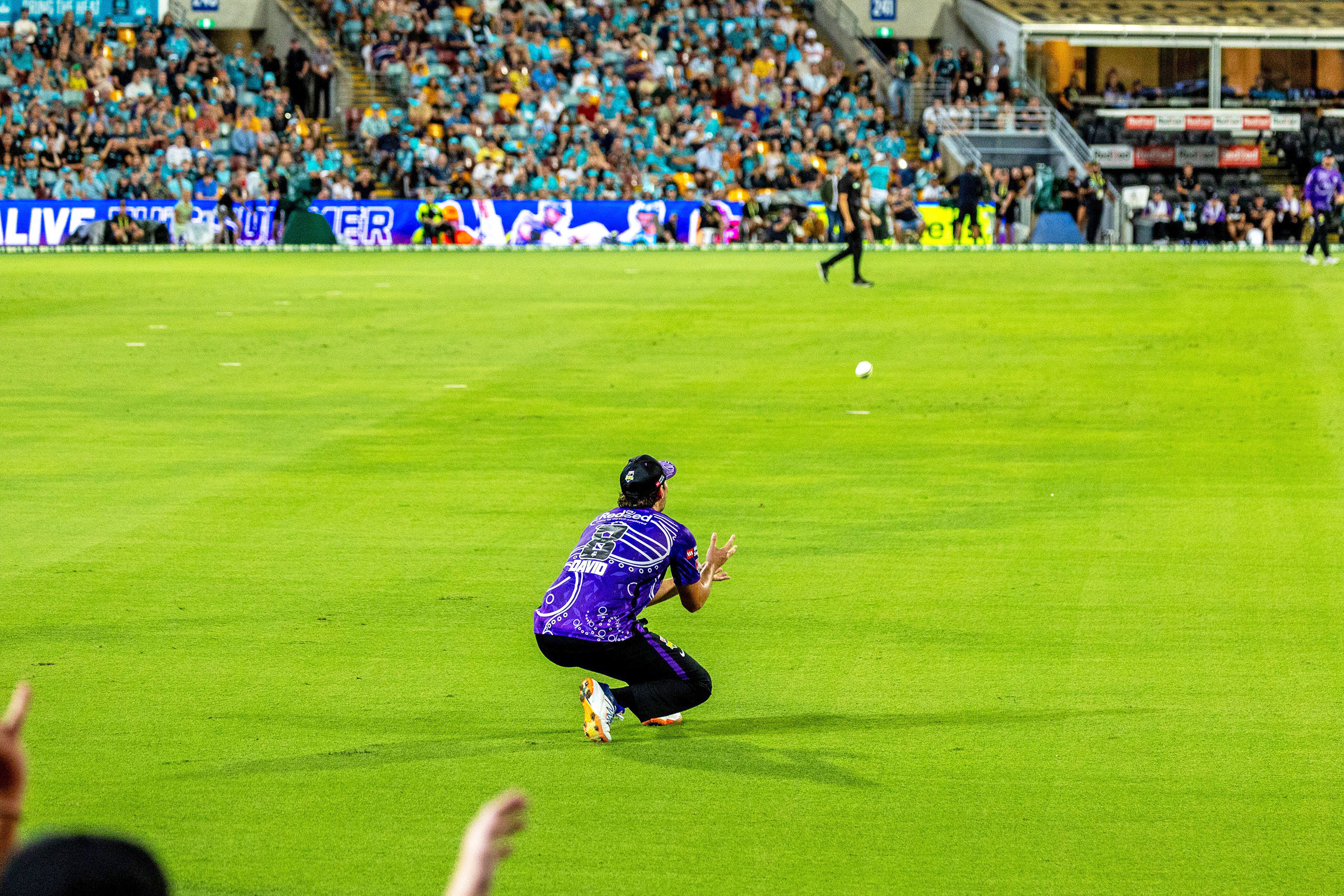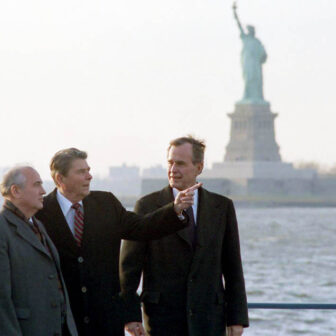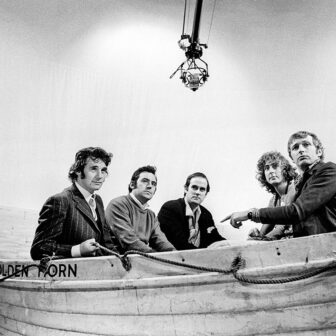One of cricket’s hallowed traditions is the prediction of its imminent demise. The centrepiece of the dismal forecasts is usually the growing dominance of shorter forms of the game over test matches, the perceived equivalent of a retreat from Mozart to the Monkees. Of all sports, men’s cricket followers tend to fear that the game — and the world for that matter — is on a downward spiral.
As recent summers go, this has been a relatively successful one for Australian cricket. The test matches have kept fans’ attention, the crowds have been good and the television audiences robust. But the season also brought with it the most ominous sign yet of an existential threat.
The team South Africa sent to New Zealand to play the test series was very much a second eleven. Why? Because it wanted to give priority to its own relatively new Twenty20 competition. South African officialdom ordered all players with deals to play in the SA20 to stay home. They cancelled a one-day series with Australia a year earlier for the same reason.
Twenty20 matches have been played since 2003 between countries and domestically, but the format took what turned out to be a radical new turn when the Indian Premier League, or IPL, emerged in 2008. That league’s ten city-based franchises bid against each other for players’ services, with each team allowed several international players. It has become by far the richest cricket competition in the world: last year the media rights for 2023–27 sold to Viacom18 and Star Sports for US$6.4 billion, making the value of each match US$13.4 million. Its contracts with leading players dwarf their payments from official sources.
(Most women’s contests, by contrast, have been short-form matches, and nearly all cricketing nations have well-established domestic and international Twenty20 calendars for women. The franchise model — Australia’s Women’s Big Bash for instance, which began in 2015 — is also popular, although only in 2023 did a women’s competition become part of the IPL; the prices paid for leading players immediately soared into the hundreds of thousands of dollars, a welcome boost for traditionally underpaid players.)
None of IPL’s fast-multiplying imitators — including Australia’s Big Bash League — has reached anything like its heights. Age journalist Greg Baum says that at least twelve domestic Twenty20 competitions now exist, not only in South Africa but also in the Caribbean, Pakistan, the United States and the United Arab Emirates.
Many of these competitions have teams owned by IPL franchises: all six South African teams, for example, and three of the six teams in the UAE’s ILT20. As IPL franchises set up more satellite operations, they may gain even more commercial leverage and be able to offer multi-competition or even year-long contracts to players.
For the players, these competitions offer new and lucrative opportunities. For several — especially from poorer countries where official payments are much lower — the competitions promise a lucrative twilight for their career, tempting them to retire from test cricket earlier.
But they are also shaping players’ careers much earlier. Already some players — from the West Indies, for example — give priority to the new competitions over test cricket. Increasingly, they can have a professional career while only occasionally interacting with the sport’s established structures. Australia’s up-and-coming twenty-six-year-old, Tim David, will play in seven different competitions in 2024, four of these non-Australian. Former England batsman Alex Hales is on the books of six clubs around the world; in those circumstances, being loyal is playing for only one club in any given competition.
The accelerating profusion of franchise-based competitions presents challenges for the mainstream cricket industry, which has already faced and only partially overcome two other challenges.
The first of these, already alluded to, is the balance between the format that brings in the most income and spectators — limited-over “white ball” cricket — and higher-status “red ball” test cricket. The second is the increasing dominance of audiences for international sporting events over those watching domestic competitions. Even though domestic competitions are crucial to the viability of the sport, some have suffered a decline in both audiences and income. Australia’s Sheffield Shield is a dramatic example: its crowds are a fraction of what they used to be, and it receives only fleeting attention in the media.
Cricket Australia’s response has been less than convincing. The Sheffield Shield now plays five rounds from early October to the beginning of December, has a nine-week hiatus, and then plays five final rounds in February and early March. A final eventually comes, anti-climactically, in late March, only to be broadly ignored by the nation’s media and a sporting public by now focused on football. It must rank as one of the most bizarre professional sporting fixtures in the world.
Australia’s answer to the IPL, the Big Bash League, has two fundamental weaknesses compared with the original. The first is that the best and best-known Australian players are rarely able to participate because of overlaps with test matches. David Warner, for example, one of the biggest drawcards in Australian cricket, didn’t play in the BBL for nine years, has played far more IPL than BBL matches, and has almost certainly made far more money playing for the IPL than for Australian teams.
The second structural problem is that overseas stars come and go depending on the other financially rewarding commitments they have, and are often missing at the season’s crunch time. Already this year, Brisbane Heat captain Colin Munro and teammate Sam Billings and the Sixers’ James Vince have all abandoned the BBL, and missed its final round, to join their ILT20 teams in Abu Dhabi.
Discontent with such weaknesses has even been expressed by the sport’s broadcaster. In 2022, in an unprecedented legal action, the Seven Network sought to get itself out of its $450 million broadcast deal by arguing that Cricket Australia had failed to deliver the BBL at the contracted quality and had thus depressed viewer numbers. Peace has apparently since been restored.
Cricket Australia is certainly subject to conflicting cross-pressures, but the fixtures for the Sheffield Shield and BBL strongly suggest that it has failed Sports Scheduling 101. Its main response has been to pack the cricket calendar ever more tightly, loading it up with too many events of little significance.
After the fifty-over World Cup finished in 2023, Australia played India in a series of Twenty20 matches. But most of each team’s best players were rested. It was still called an international fixture, but I wonder if any cricket fans can remember, or care, who won. Quantity is no substitute for quality; what’s needed is not more matches but more structured, meaningful contests.
What makes the challenge even more difficult is the fact that cricket’s problems are occurring amid rapid changes in the larger media–sport complex. The ever-increasing growth of gambling is the first of these problems: especially online gambling, which can cross national jurisdictions. In just three years from 2018 to 2021, legal sports wagering in the United States grew from less than US$5 billion in bets placed to US$57 billion. More than a million gambling ads were aired on Australian free-to-air TV and radio last year, with an unknown number more on pay TV and streaming services.
Apart from the human problems associated with gambling, cricket has had particular problems with corruption — namely match fixing and spot betting — associated with illegal gambling. In private leagues with weak checks and balances these problems could easily increase.
The second recent trend is “sportswashing,” a term that was selected by the Language Council of Norway as its 2021 word of the year. Sportswashing refers to the effort to improve one’s image, or redirect public attention away from human rights abuses and other shortcomings, by sponsoring global sport spectaculars. Wealthy Saudi Arabia, a noted human rights offender, has made significant inroads into tennis, golf and soccer. (The Saudis might also be using their financial muscle to create continuing profit flows from these sports.) So far the major Middle Eastern involvement in cricket has come from the United Arab Emirates.
The media part of the media–sports complex is also in flux. Streaming services increasingly assert themselves in what was the preserve of free-to-air and pay TV services. Amazon recently reached a deal with the International Cricket Council for the exclusive broadcast rights to ICC games in a deal spanning 448 live games in 2024–27. None of these games is on Australia’s anti-siphoning list, which primarily covers games played in this country. But Australians — probably along with people in the other participating countries — will have to pay to watch the next cricket World Cup. It may make the broadcasters and the ICC money, but it could substantially reduce the viewing audience.
Tackling this mix of problems will require concerted international action by the cricketing nations, but here too obstacles exist. Test cricket seems to be viable in England, Australia and India but much more fragile elsewhere. Moreover, one country, one vote doesn’t prevail in international cricket policymaking. India now accounts for 80 per cent of international cricket revenue, so any solution must be acceptable to it; equally, though, any lasting solution must also see funds flowing to the poorer countries.
In the immediate future the proliferation of franchise-based domestic Twenty20 competitions will play havoc with cricketing schedules. While past and present champions will solemnly declare their continuing commitment to test cricket, cricketers from other countries and those not quite in the top echelon will vote with their feet.
Within these manufactured contests, the dynamics are yet to become clear. How much team spirit will be generated in a group of players brought together by commercial opportunity? Despite the profusion of fan merchandise, how involved will spectators be in competitions between recently created franchises? Rather than traditional rivalries built up over decades, these may be soulless contests. “Ever since I was a child I wanted to play for the richest franchise” doesn’t quite have the same resonance as “Ever since I was a child I wanted to represent my country.”
All these competitions are essentially parasitic structures (as indeed was Kerry Packer’s World Series cricket in the 1970s). Feeding off the talent nurtured by the representative institutions, they offer undreamt-of riches to the most marketable stars. But they do nothing to build the future of the game. If the balance of power — financial and political — between the representative institutions and the franchises swings too far, the problems are likely to be more severe than the sound of members at Lords spluttering into their gin and tonics. •




